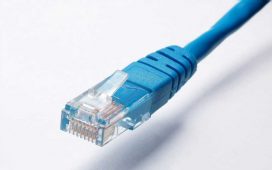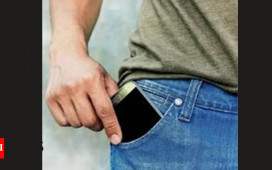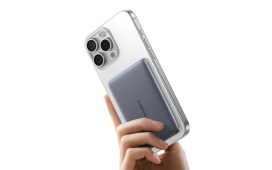iPhone 17 Air vs Samsung Galaxy S25 Edge: The competition to create the smallest smartphone by 2025 is growing. With their respective high-end products, Apple and Samsung, the two largest tech companies in the world, are apparently fully committing to ultra slim designs: The Samsung Galaxy S25 Edge and the iPhone 17 Air
The competition to create the thinnest smartphone by 2025 is growing. With their respective high-end products, the Samsung Galaxy S25 Edge and the iPhone 17 Air (which will likely replace the Plus model in the iPhone’s annual lineup), the two largest tech companies in the world, Apple and Samsung, are apparently making a significant bet on ultra slim designs. These phones are anticipated to combine premium hardware with svelte designs, marking a return to the era when thinness was valued as a design element. However, thinness frequently has drawbacks, such as a simplified camera system, a smaller battery, or poor thermal management. How well will these thin gadgets function in practical applications is the key question. Let we examine.
iPhone 17 Air vs. Samsung Galaxy S25 Edge: Design and display
Both phones are expected to set new benchmarks for thinness in terms of size. In line with reports, the Galaxy S25 Edge is the thinnest Galaxy phone ever, measuring only 5.84 mm in thickness. Samsung claims to be using a titanium chassis with Corning Gorilla Glass ceramic protection on the front, which will increase the device’s durability and scratch resistance despite its incredibly thin frame. It is anticipated that the phone will weigh about 162 grams, making it not only the thinnest but also the lightest in its segment.
The thinnest component of the iPhone 17 Air, on the other hand, is said to be 5.5 mm thick. As part of its ongoing efforts to achieve sustainability targets, Apple may decide to use aluminum rather than titanium. The total elimination of the conventional SIM tray, signifying a complete shift to eSIM technology, may be one significant development. This strategy might assist Apple in keeping its façade simple and uncluttered while also clearing out internal clutter.
It is expected that the Galaxy S25 Edge will have a 6.7-inch AMOLED screen with a refresh rate of 120 Hz. A 6.6-inch OLED panel with ProMotion technology is probably going to be included in Apple’s iPhone 17 Air, which will be the first non-Pro iPhone to have a high refresh rate display. Both phones strive to provide a high-end visual experience in a small package, and they are rather comparable in that part.
iPhone 17 Air vs. Samsung Galaxy S25 Edge: Software and performance comparison
Performance is the first priority for both phones, even with their thin designs. The Snapdragon 8 Elite processor, up to 12GB of RAM, and up to 512GB of storage are expected to be included in the Galaxy S25 Edge. To improve user experience and efficiency, Samsung may potentially incorporate personalized Galaxy AI services like photo editing, live translation, and intelligent automation.
The new A19 chip, which is based on a 3nm technology, might be included in the iPhone 17 Air. Despite the fact that it may only have 8GB of RAM, Apple’s hardware-software synergy and iOS optimizations frequently produce effective and potent performance. Apple’s proprietary modem chip is also reported to be included in the phone, which could enhance connectivity and battery life.
About software, Apple is anticipated to release iOS 19 with enhanced AI features, such as enhanced Siri, real-time summaries, and sophisticated photo tools. Samsung will continue to improve intelligent features with its One UI version, which is based on Android 15 and will also greatly focus AI.
iPhone 17 Air vs. Samsung Galaxy S25 Edge: Battery
Thinner phones often sacrifice battery life first, but both companies are making astute moves to minimize this trade-off.
It is expected that the Galaxy S25 Edge would have a 3,900mAh battery with 25W fast charging. Although it is not the quickest in the Galaxy lineup, most users should find it to be more than enough. Also, there are rumors that the phone will feature wireless charging, maybe at 15W speeds.
With the next-generation A19 chip, which is expected to be more energy-efficient than the A18 chip, Apple’s iPhone 17 Air may compensate for its somewhat smaller battery. The phone might have battery life comparable to or better than the bigger iPhones with iOS improvement. Also expected are 20W wired charging and MagSafe wireless charging.
iPhone 17 Air vs. Samsung Galaxy S25 Edge: Launch details and price
The Galaxy S25 Edge will go on sale on May 13, 2025, says Samsung, with a worldwide rollout probably following shortly after. It is expected that the phone will be in the high-end market, perhaps in between the Galaxy S25 Plus and S25 Ultra. The pricing range is expected to be between Rs 99,999 and Rs 1,29,999. According to leaks, the 256GB model may cost 1,249 euros, while the 512GB model may cost 1,369 euros. These prices roughly mean Rs 1,20,000 and Rs 1,31,600, respectively.
Alongside the iPhone 17 series, the iPhone 17 Air is expected to launch in September 2025. With a starting price of about $899 (about Rs. 76,800), it might take the place of the iPhone 16 Plus in Apple’s lineup. If Apple sticks to its pricing plan from the previous year, it is expected to start at about Rs. 89,900 in India.
Final Thoughts on the Samsung Galaxy S25 Edge vs. iPhone 17 Air
The iPhone 17 Air and Samsung Galaxy S25 Edge are both more than just displays of style. Based on what we have gathered thus far, you can anticipate excellent performance, excellent screens, and clever features—all while pushing the limits of flagship phone thinness.
Each company is, however, adopting a slightly different strategy. Samsung is focusing on the hardware, which includes a 200-megapixel rear camera, a high-end titanium frame, and ceramic glass protection. Apple, on the other hand, is concentrating on improving the user experience through power economy, software integration, and a clean design philosophy.
In the end, your decision will be based on your priorities: Apple’s simple yet highly customizable product or Samsung’s feature-rich approach. There is no denying that being skinny is popular in 2025.










